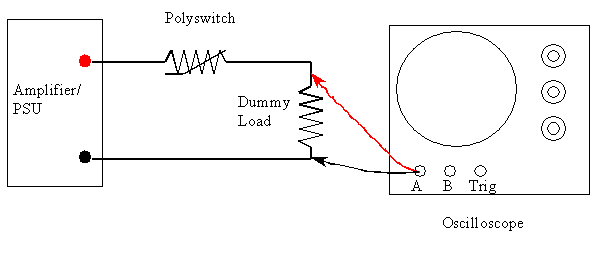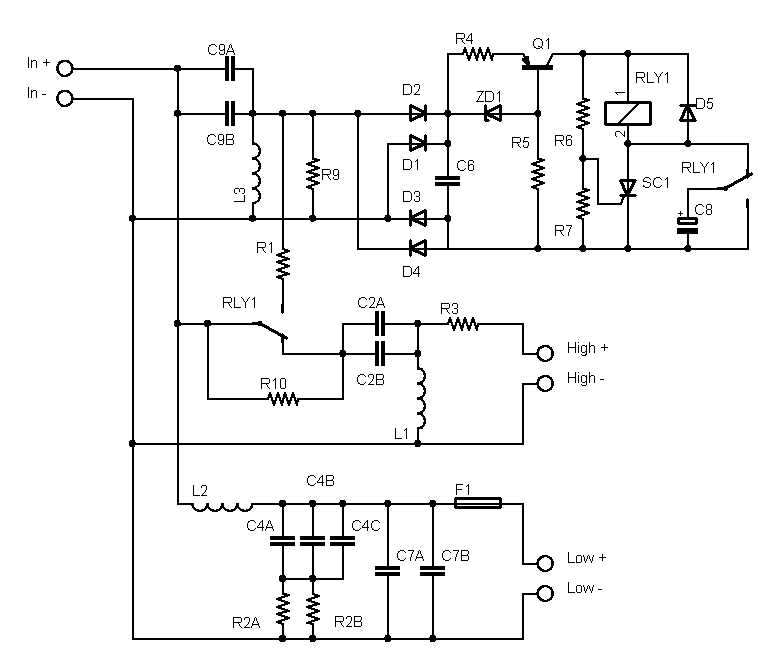
Description
There are plenty of Passive crossover
kits and PCBs around but this one also addresses a problem that many do
not touch, Tweeter protection.
Many of you will have noticed that
tweeter Failures are not uncommon particularly in Sound reinforcement
systems.
I have heard many theories attempting to explain
this involving clipping and distortion, but really the reason is very
simple:
Tweeters, particularly horn loaded compression drivers are very
sensitive, often 6 to 12dB more so than the lower frequency
drivers.
High frequency power of 'normal music' expected from the
Tweeter is often as low as 25% of the total acoustic power.
What all
this means is that a tweeter only needs to have a fraction of the power
handling of the speaker system as a whole and 50 Watt tweeters in 500W
speakers are not entirely unheard of.
Now when everything is working as it should this is fine,
but when something starts feeding back, and your Amplifier starts trying
to deliver full power to your Tweeter, then its future life expectancy is
often measurable in fractions of a
second....
Having had a number of Tweeter failures I decided it was
time to investigate protection.
The speakers I had on hand with blown
tweeters had been protected with poly switches yet had still failed.
I
had heard that selecting the best poly switch was always a balance between
adequate protection and nuisance tripping so I ran some tests on three
Poly switches: RXE110 (Rated at 2.2A or 38.72W @ 8 Ohms) RXE090 (Rated at
1.8A or 25.9W @ 8 Ohms) and RXE075 (Rated at 1.5A or 18W @ 8
ohms).
To test the response times of the poly switches I used the
following test rig:
 |
I used a Tektronix TDS210 as the oscilloscope set as single shot, at 1 second per division and a dummy load of 4 Ohms (the dummy load has a 2:1 output to the oscilloscope).
With this setup I could measure with a reasonable degree of accuracy, how long the poly switch took to open.
For the first round of tests I ran 4.1 Amps through the poly switch and measured how long the poly switch took to open:
Despite this being almost twice the trip current of the RXE110, it took almost 4 Seconds to open:
 |
The RXE090 took almost 3 Seconds to open and even the RXE075 took 2.5 Seconds to open.
Having tested several Tweeters to
Destruction (by no means an exhaustive test as Tweeters are expensive, but
more to get an indication of how long a tweeter could last) I had found
that most nominal 50Watt tweeters would be lucky indeed to last 2 seconds
at 128 Watts.
I also found that many of the cheaper '50 Watt' tweeters
were in fact lucky to survive several seconds at full power, although to
give credit where credit is due the two more expensive tweeters I tested
did handle rated power for several hours - despite being mounted inside an
insulated wooden box (the test got rather loud
otherwise).
The conclusion I reached was,
that while Poly switches are better than nothing, they are barely
adequate as Speaker protection.
Lightbulbs
likewise proved to be problematic - either getting consistent lightbulbs
or lightbulbs that provided adequate protection without false tripping or
failure.
What I needed, was protection that tripped
at a preset point, allowed a slight (but not significant delay) before
tripping (to avoid tripping on otherwise harmless signals), preferably a
circuit that reset itself when the danger had passed and just to add to
the challenge a circuit that required no external power....
This is the
circuit I came up with:
 |
C9 and L3 act as a high pass filter, while
R9 provides a constant/predictable load for the filter.
D1 to D4 are UF4001 high speed diodes acting as a full wave
rectifier and C6 - 1uF (May be varied to suit application) acts as a
Filter/Delay.
R6 (Set as required) and R7 (560
Ohm) act as a voltage divider to trigger for the SCR SC1,
and determine the voltage at which the protector trips. R6 may be
calculated by R6= (Tv-0.56)*1000 where Tv is the trip Voltage.
R1 allows the Input filter to be bypassed if/when
the protection is triggered this would mean that protection remains active
until it is reset by a compete absence of signal - I have not
used this option yet but I would suggest R1 of around 39 Ohms (if
used).
C8 (10uF) ensures that the SCR is reset
when the Relay drops out.
Finally Q1(MJE340), R4
(85 Ohm), ZD1 (3V3) and R5 act as a current limit to stop the Relay
burning out when protection is active.
RLY1 is a
Relay with a 400 Ohm coil and R9 is set at 150 Ohms, This sort of load
should be insgnificant when compared to typical 4, 8 or even 16 ohm
speaker systems.
While I did experiment with
alternative methods of resetting the SCR that did not involve an extra
pair of Relay contacts, the Relay I ended up going with only cost $1
more than the SPST Relay and has 5 Amp contacts instead of 3
Amps.
The reason for having a high pass filter in
front of this circuit rather than installing this circuit after the
existing high pass filter in the crossover is that if the tweeter alone is
disconnected, then in the case of a second order crossover, the high pass
filter for the tweeter will act as a series resonant circuit and
this may cause stability issues for some Amplifiers.
Of course
this is a Crossover, so by the time I add all the other components for a
second order crossover we get:
 |
L2 and C7 are the low pass filter for the woofer while C4 and R2 provide impedance correction for the woofer.
Woofers are largely inductive by the time you get to their crossover point and may have an impedance of 40 Ohms or more, as a result simple 2nd order crossovers can end up providing far less than the expected 12dB per octave rolloff.
This may or may not be an issue, but if it is, then impedance correction will help fix this
F1 only provides 'Line of last resort' protection for the woofer - by far the majority of failures I see are of the tweeters and by the time you fry a woofer things have gone horribly wrong and a Relay that can handle the sorts of currents involved is going to be quite substantial.
If I am to be honest though, the fuse was really added as the PCB needed a link and I figured an appropriately sized fuse was unlikely to cause any harm.
Calculations for all these component Values are included along with worksheets in the Instructions for this project (PDF)
Note that you need not add all of these components if you wish (not even the tweeter protection if you do not want - although I suspect you could get a cheaper PCB if you did not want this option).
Kit costs $xx (Australian) and includes:
PCB
Assembly instructions
Email for more details or Paypal instructions (to order) - note at this stage I will have to work out mail costs on a case by case basis...
Copyright © 2011 Australian Technical Production Services